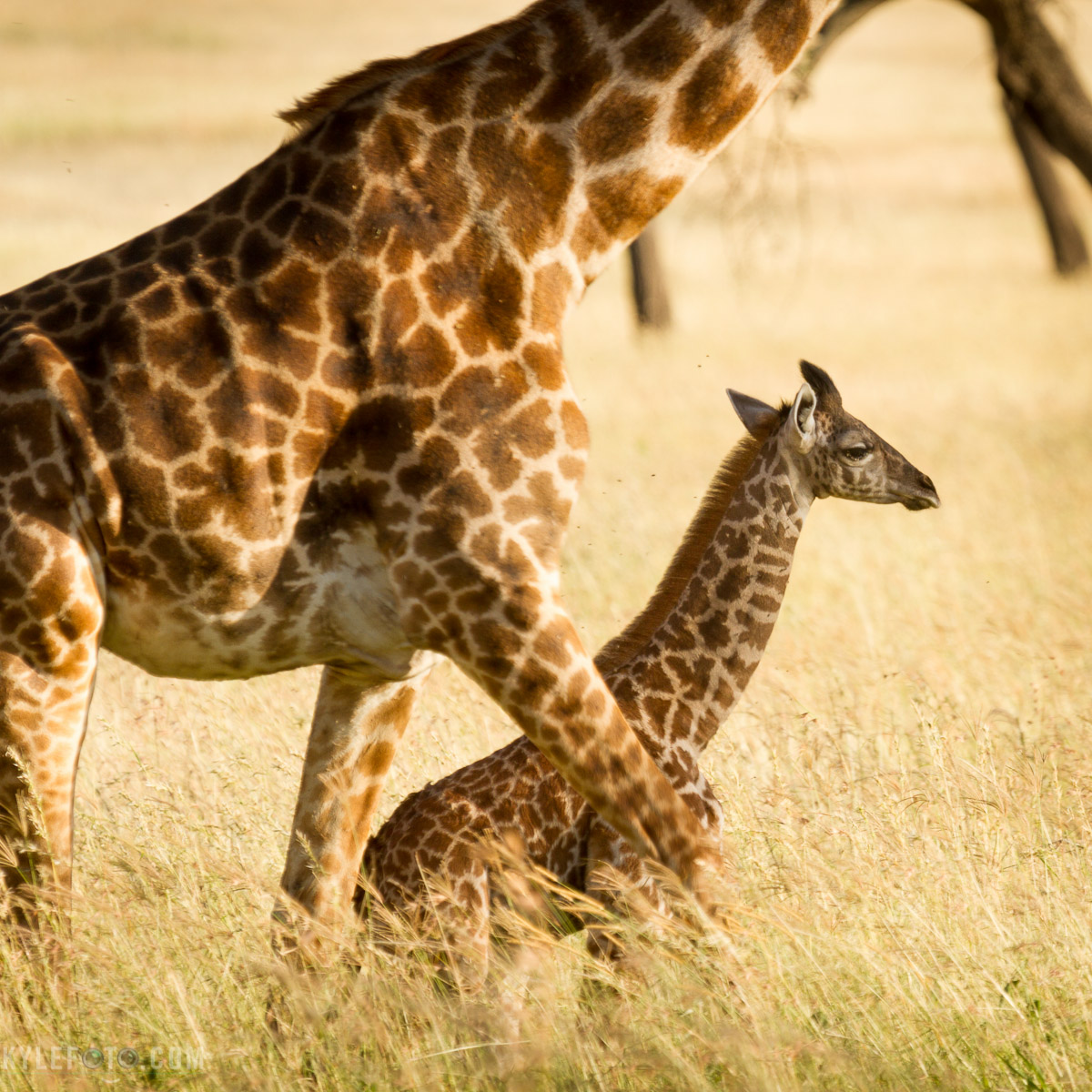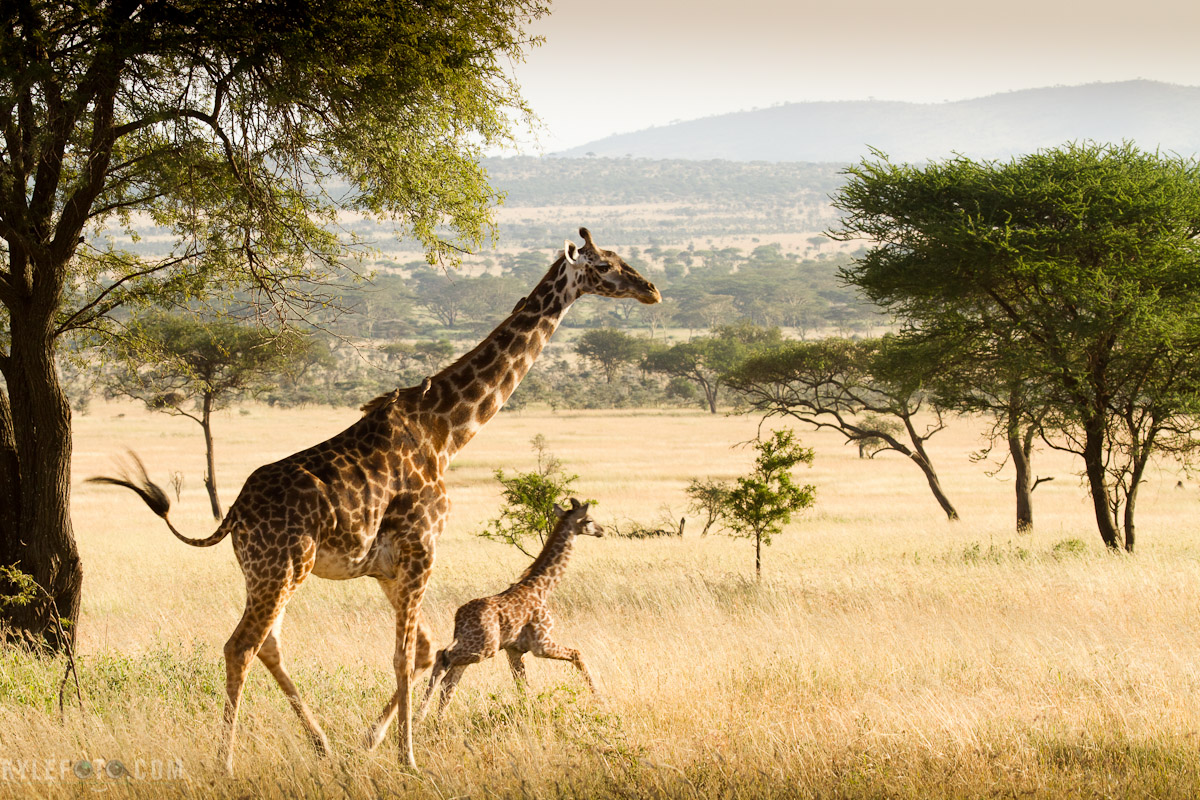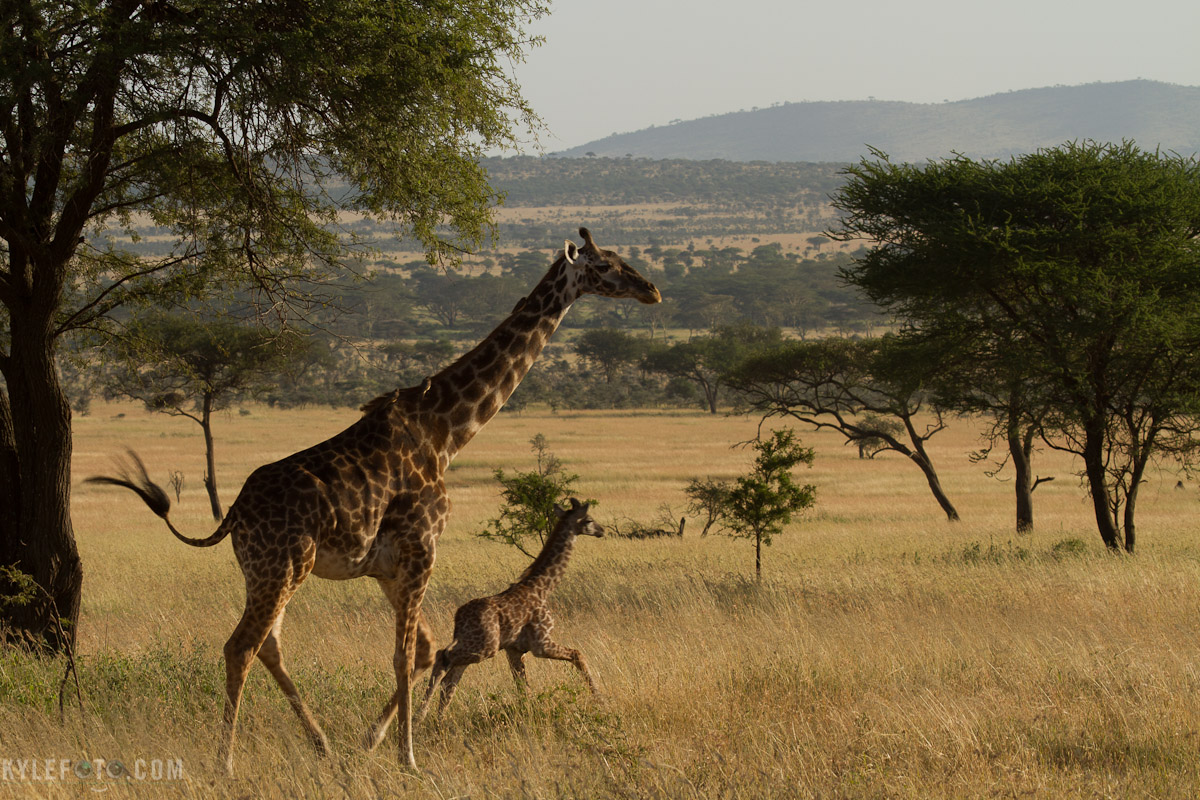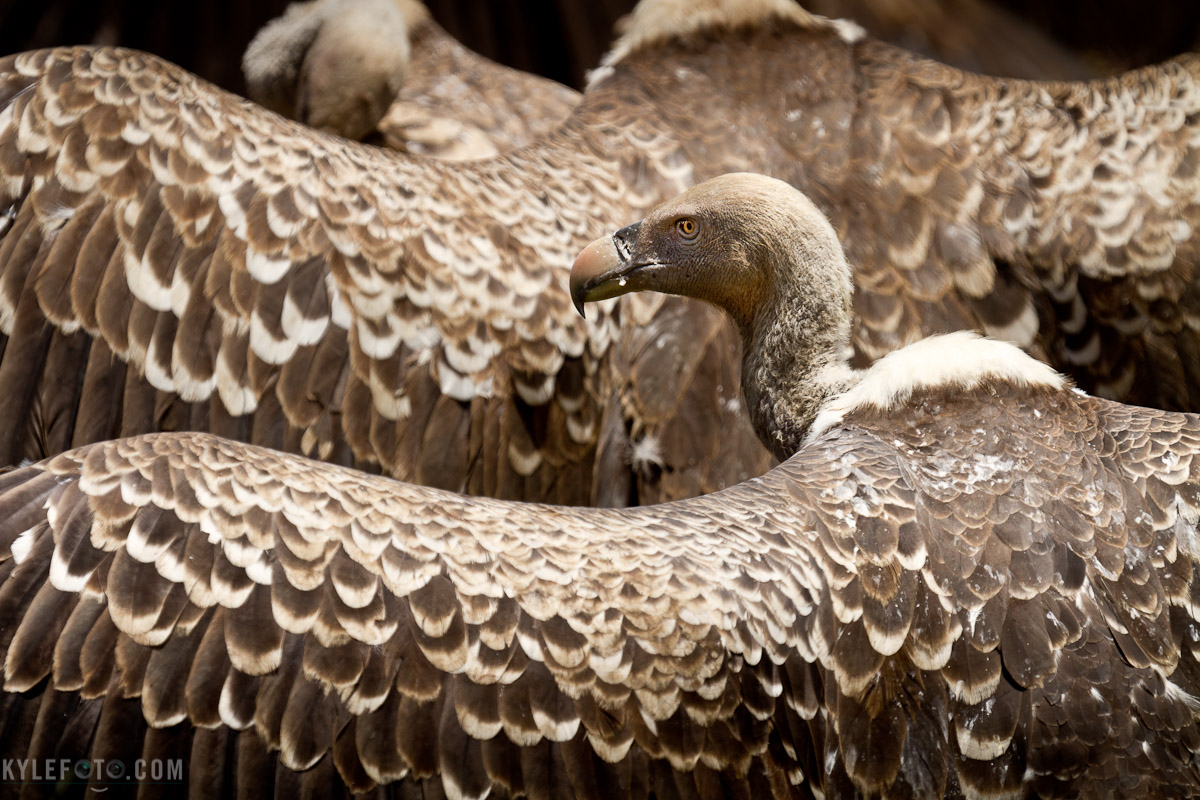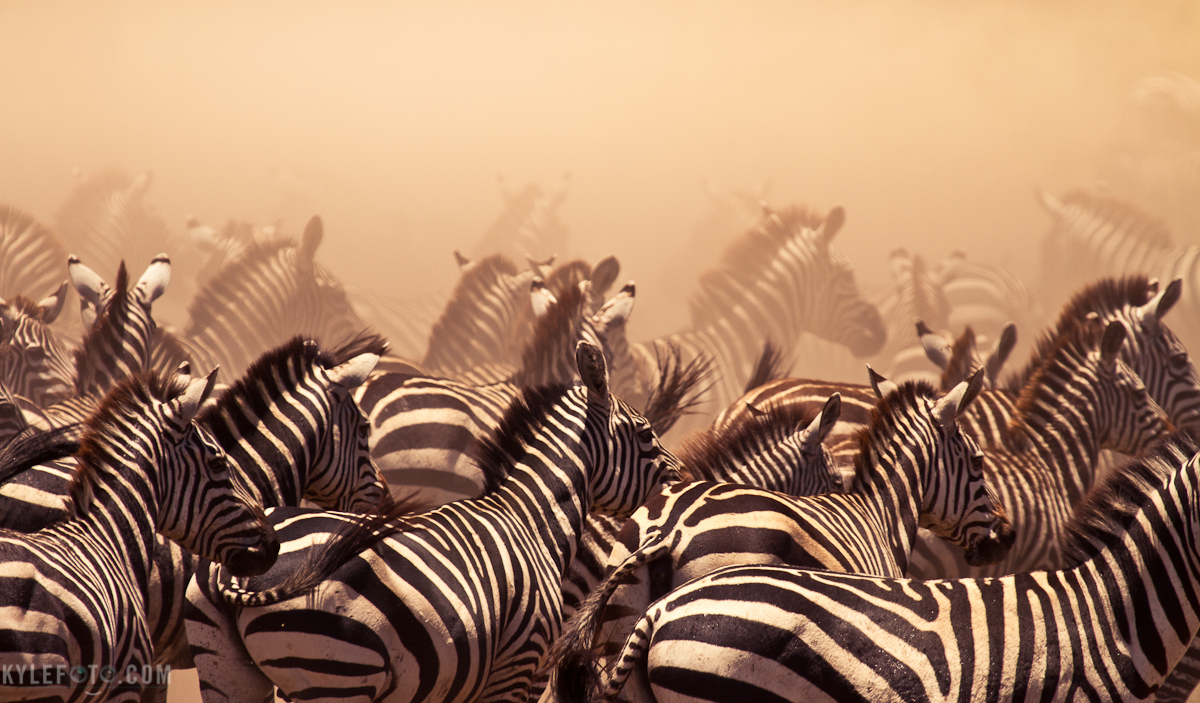On safari in the Serengeti, Tanzania This young giraffe will hang by her mother along with other females in a group. This is the identical pair that I photographed earlier. After this wild baby giraffe was finished ambling around the Serengeti she settled down under her mother for a moment. Already getting the zoomed out scenic shot under my belt ( http://wp.me/p1meFH-OA ) I had to photograph some detail shots now.
Photographic Details: My main focus was the baby giraffe, and given how good our minds are at putting things together I knew I didn’t have to have the whole mother and baby giraffe in the same shot. The point of the photo is to show the scale between the mother and the baby, in addition her position under her mother perfectly expresses how important of a shelter this mother is to her baby. The rest is up to the viewer, we’re good enough at guessing that the rest of the mother is beyond the frame to know she’s just not a headless four legged monster, keeping the focus squarely on the baby. I decided to crop this image square, it’s a nice shape and the extra background to the right I thought was unnecessary. With this image I used the exact same storytelling device I used with a baby elephant, clearly it’s a story that is seen in many animals all over africa http://wp.me/p1meFH-Ow
1/160s f/7.1 ISO100 400mm
[button size="large" link="http://kylefoto.smugmug.com/Animals/Africa/19644918_hpCKDK#!i=1749482326&k=vst3v7M" linkTarget="_blank" color="blue"]


